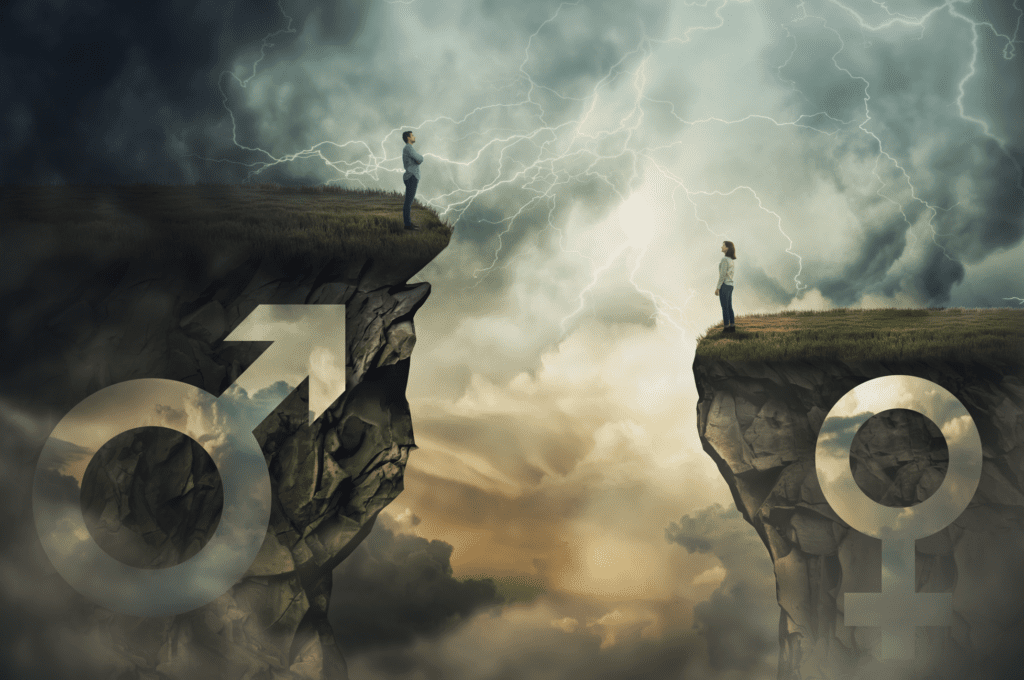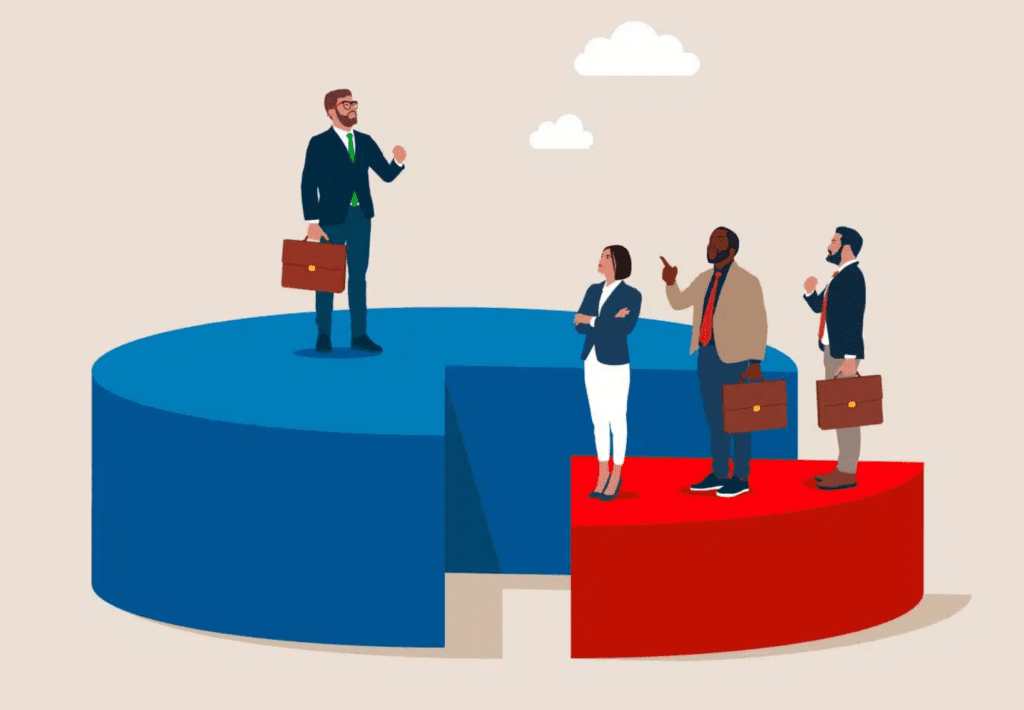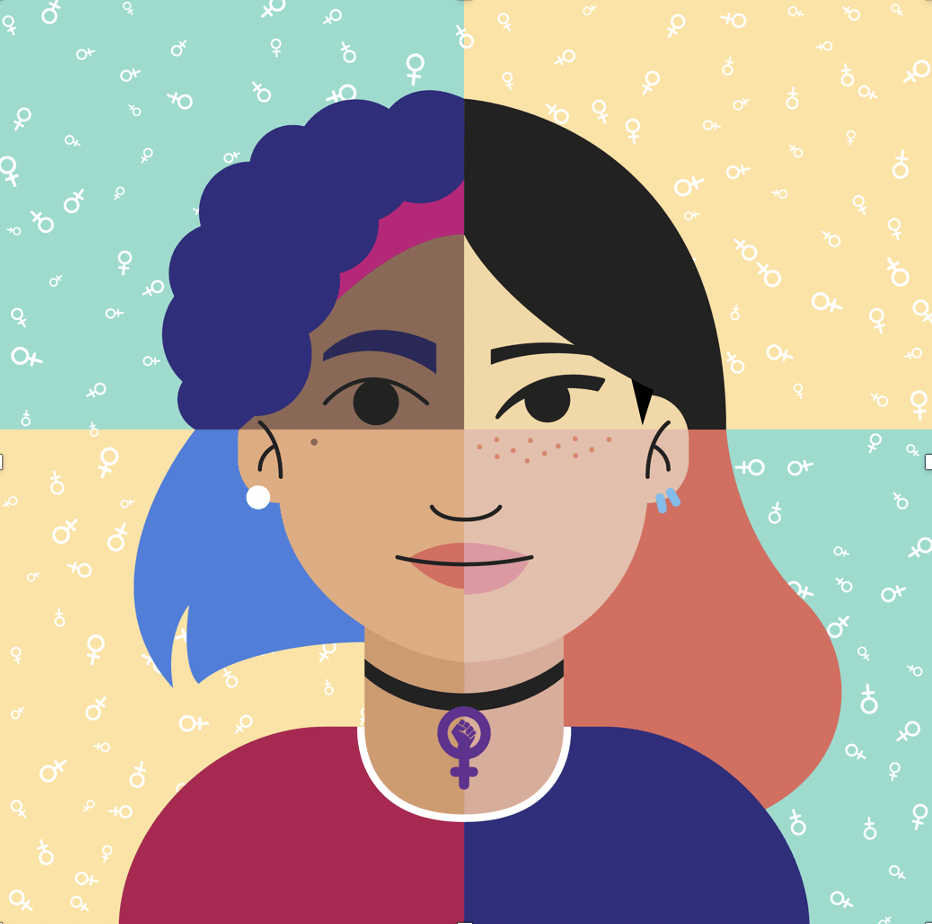
In a world where first impressions are everything, it’s easy to make snap judgments based on our biases. By taking a closer look at the hidden bias that shapes our perception and behavior, we’ll uncover how our mental shortcuts can often lead to unfair and inaccurate conclusions. Discover how your unconscious biases could affect your personal and professional life and those of others. By questioning these assumptions and hidden bias, we can work together to create a more just and inclusive society. (Estimated reading time: 11 minutes )
“Before you judge someone, walk a mile in his shoes.”
– Eminem
In a world where first impressions are everything, it’s easy to make snap judgments about people based on their appearance, mannerisms, or even their social media profiles.
We are naturally inclined to do this because it’s a byproduct of how our minds function. In my podcast chat with U.K.-based cross-cultural specialist Pellegrino Riccardi, who comes from an immigrant family from southern Italy, he shared his thoughts on how the human brain takes shortcuts when judging others.
“The brain doesn’t want to do anything that is not absolutely necessary to survive – and to work with other cultures, when they are really different to yours, requires you to have a non-lazy brain. You have to challenge your assumptions, beliefs, and expectations,” Riccardi shared.
That does not mean that we don’t have a responsibility to weed out the hidden bias that might lead us to misinterpret others and their abilities, particularly in high-stakes situations. Making snap judgments about others so they can be categorized into neat little boxes based on arbitrary criteria can be damaging, not just to them but also to ourselves.
If you’ve found yourself on the receiving end of someone’s bias, remember that it reflects more about them than it does about you. This perspective, which I’ve held onto for years, was put to the test recently when I attended a book fair to showcase my new book, “The Nomadic Soul.”
I met a woman in her late 20s who ran a small independent bookstore. After she glanced at my book, she looked up, scrutinized me, and coldly remarked in her heavy accent that she didn’t want to add more authors from my ethnic background to her collection.
I was left speechless. This blatant discrimination is, fortunately, something I’ve only experienced a handful of times in my 40 years on this earth. What struck me even more was that she was also a woman of color, and I couldn’t help but wonder what animosity was driving her not to support a fellow person of color in her mission to spread a message that could help other people live better lives.
This experience came at just the right time for me, serving as a reminder from the universe about the painful effects of bias that countless individuals encounter daily across the globe. Thankfully, my situation is secure, so the comments made by that woman at the book fair are inconsequential and have no bearing on my future. However, it did leave me feeling othered and concerned about the welfare of my fellow beings.
The journey to inclusivity requires ongoing dedication and the courage to face some uncomfortable realities about us and our society. By acknowledging how hidden bias influences our choices and interactions and cultivating empathy and curiosity, we can strive to create a society that appreciates the unique contributions of every individual, no matter their background.
Understanding bias: what is bias, and how does it affect judgment

Bias is a natural aspect of human thinking that shapes our perception and interpretation of the world. Essentially, bias is the inclination to favor one viewpoint, group, or idea over others, resulting in unfair judgments. This can take different forms, like giving preferential treatment to specific people based on their background or traits while putting others at a disadvantage. Understanding bias is important because it influences many everyday choices and interactions.
The influence of hidden bias on our judgment can be both subtle and significant. For example, when we meet someone new, our minds rapidly analyze visual cues and social signals to create an impression. These initial perceptions are frequently influenced by biases we might not consciously recognize, leading to snap judgments that can carry significant implications.
In various contexts—social gatherings, workplaces, or professional evaluations—these biased evaluations can impact the opportunities available to us and the relationships we establish.
Understanding how bias affects our judgment helps us to mitigate its impact. By being aware of our instinctive responses and questioning the validity of our beliefs, we can work towards fairer and more just interactions. This awareness is crucial in recognizing the biases that shape our views, paving the way for a more inclusive society where people are assessed on their abilities rather than stereotypes.
The different types of bias: implicit, explicit, and unconscious bias
Bias appears in various forms, and recognizing these distinctions is crucial for tackling the underlying issues.
1. Implicit bias: This bias refers to the attitudes or stereotypes that influence our perceptions, behaviors, and choices without us even realizing it. These biases often operate automatically and can be activated without conscious thought. For instance, someone might unknowingly hold negative sentiments towards a specific ethnic group, which can influence how they engage with people from that group, even if they consciously believe in equality and fairness.
2. Explicit bias: This type of bias refers to the conscious beliefs and attitudes that people are aware of and can articulate. Personal experience, cultural influences, and societal expectations typically influence these biases. For example, someone who openly favors hiring candidates from their own demographic group is exhibiting explicit bias. Although explicit bias is easier to identify and confront, it doesn’t diminish the significant impact of implicit biases that often function outside our conscious awareness.
3. Unconscious bias: Closely related to implicit bias, unconscious bias encompasses those biases we may not be aware of but still influence our behaviors and actions. These biases often arise from social stereotypes and cultural conditioning, prompting people to form judgments based on factors like race, gender, age, or other traits. To reveal these unconscious biases, we need to engage in self-reflection and be open to questioning our assumptions, as they frequently clash with our conscious values of fairness and equality.
The role of stereotypes in judgment: how preconceived notions shape our perceptions

Stereotypes serve as mental shortcuts that help us quickly categorize people based on specific traits or characteristics. Although these shortcuts can help us navigate a complex world, they frequently result in oversimplified views that fail to capture an individual’s true self.
By relying on stereotypes, we may overlook the distinct qualities and experiences that make each person unique, which can lead to incorrect assumptions. For example, believing that a woman is less skilled in a technical area solely due to her gender undermines her capabilities and reinforces harmful stereotypes.
Stereotypes significantly influence how we view the world, impacting areas such as the workplace, education, and social interactions. For instance, during hiring, employers may unintentionally lean towards candidates who match their existing ideas of an ideal employee, leading to the exclusion of qualified individuals who don’t fit these narrow criteria. This perpetuates a cycle of inequality, as diverse talents and perspectives are overlooked in favor of familiar, albeit often limiting, models.
Stereotypes can also create self-fulfilling prophecies, where people internalize the expectations society has set for them. For instance, a student labeled “not good at math” might lose interest and struggle in that subject, strengthening the stereotype. To combat these assumptions, we must make a dedicated effort to acknowledge their effects, challenge their accuracy, and embrace a variety of viewpoints. This approach helps us develop a deeper, nuanced understanding of individuals, enabling us to truly value their unique contributions.
How the media influences our bias with its influence and representation
The media plays an important role in shaping how society views various issues and can significantly impact biases. Through representation, the media can either reinforce or question stereotypes, affecting our opinions about people and communities. For example, how specific demographics are depicted in news articles, movies, and TV shows can result in broad assumptions regarding their actions, beliefs, and skills. Insufficient diversity in media representation can perpetuate negative stereotypes, ultimately shaping public views and attitudes.
The subtle impact of media on our biases is concerning, as people may absorb messages without critically evaluating their implications. For instance, repeated exposure to certain narratives about a specific racial or ethnic group can shape perceptions that align with those stereotypes, even if individuals consciously oppose such views. This situation highlights the need to actively analyze media content and be aware of the biases in the narratives we encounter.
The rise of social media has introduced new dynamics in how biases are formed and spread. These platforms can be a great way to hear various opinions, but they can also act as echo chambers that strengthen our current beliefs and biases. The algorithms that determine what we see often favor content that matches our interests, which can limit our exposure to different perspectives.
To counteract the influence of the media on hidden bias, it’s important to actively seek out a range of information sources and engage with material that challenges our views. By developing stronger media literacy skills, we can better recognize the biases that influence our understanding and strive for fairer representations.
The negative impact of bias: discrimination, inequality, and social division
The consequences of biased judgment extend beyond individual interactions; they permeate social structures and institutions, leading to systemic discrimination and inequality. Here are three manifestations of its impact on society:
1. Inequality in the workplace: Biases can significantly affect decision-making in areas like hiring, education, and law enforcement, leading to consistent disadvantages for specific groups. For example, research indicates that job candidates with names that sound ethnic are often less likely to get interview callbacks compared to those with more familiar names, highlighting how bias can shape employment opportunities.
2. Social division: This phenomenon can be fueled by biased judgments, often reinforcing stereotypes and promoting an “us versus them” mindset. When people are grouped based on superficial characteristics, it creates an atmosphere of mistrust and confusion, making it challenging to engage in constructive conversations and teamwork. This separation can result in underrepresentation across different fields, such as politics, business, and education, continuing cycles of inequality that are hard to overcome.
3. Social unrest: The consequences of unfair judgment extend beyond the individuals directly impacted; they ripple through society. When discrimination occurs, it breeds discontent and resentment, which can create societal tension. This tension often surfaces in different ways, such as protests, social upheaval, and polarization.
To tackle the effects of biased judgment, we must come together to question existing norms and push for systemic change. By creating a culture of inclusivity and fairness, we can strive to break down the obstacles that perpetuate discrimination and inequality, leading to a more united society.
How to recognize and challenge our biases

Recognizing hidden bias is essential for personal development and social equity. Here are steps to challenging your own biases:
- Self-assessment: This process begins with self-examination and the courage to face uncomfortable realities about how we view and judge others. Self-reflection encourages us to analyze our thoughts and responses in different scenarios. Maintaining a journal or joining the discussion about bias can shed light on recurring patterns in our judgments that we might have overlooked previously.
- Education: By educating ourselves, we can expand our understanding and confront our preconceived ideas by actively seeking out information about various cultures, communities, and experiences. Participating in workshops and training on diversity and inclusion offers valuable insights and techniques for recognizing and tackling our biases. Engaging with diverse perspectives allows us to break down the walls built by our biases and cultivate a more inclusive attitude.
- Empathy: Creating connections through empathy involves truly listening and sincere interest in others. It means listening to their words and understanding their feelings and experiences. We can build relationships beyond surface-level differences by participating in thoughtful discussions and posing open-ended questions. This approach is especially vital in difficult situations where biases might be more evident. By embracing empathy, we can cultivate a space of trust and teamwork, which ultimately helps in building a more inclusive community.
- Commitment and ongoing effort: As we become more conscious of our judgments, we must actively challenge them by questioning the validity behind our assumptions. This might mean pushing ourselves outside our comfort zones, connecting with people from diverse backgrounds, and genuinely trying to understand their experiences.
Overcoming bias: strategies for promoting fairness and inclusivity in society
Overcoming bias is an ongoing process that requires intentionality and a commitment to promoting fairness and inclusivity. This can be accomplished by creating specific policies and practices:
1. Following structured decision-making.
A constructive way to tackle bias is to adopt structured decision-making methods that minimize its influence. For instance, applying standardized evaluation standards during the hiring process can guarantee that candidates are judged on their abilities and qualifications instead of subjective impressions. This method can result in fairer outcomes and a more diverse workforce.
2. Encouraging openness and dialogue.
Having dialogues about bias in organizations and communities can help raise awareness and understanding. By establishing safe spaces for people to express their experiences and viewpoints, we encourage empathy and collaboration, making confronting biases easier. Additionally, workshops and training programs can be instrumental in providing people with the skills needed to identify and tackle their biases.
3. Educating people on diversity and inclusion.
Education is essential in overcoming hidden bias. By integrating diversity and inclusion training into educational programs, we can prepare future generations with the knowledge and abilities required to question their assumptions and embrace diversity. By empowering people to challenge their preconceived ideas and appreciate diversity, we can cultivate a culture prioritizing inclusivity and justice, leading to a more equitable future.
Ultimately, embracing diversity means appreciating the wealth of experiences and viewpoints each person contributes to our lives. It’s about honoring others’ unique traits while also discovering the commonalities that unite us. By actively confronting biases, you can help build a society that flourishes despite our differences, where everyone can succeed and make a positive impact on the future.
All my best on your journey,
Seline

Questions for you: Do any hidden biases impact how you view others? What practices can you commit to challenge those biases and view others more fairly?
Did you like this post? Sign up below, and I’ll send you more awesome posts like this every week.

You always seem to hit the nail on the head with the topics that you are talking about and sharing with us. I love reading these kinds of blogs and there are still a great number of things that anyone can from this! I loved reading it!
This is a huge danger far too many are not even aware of, and I agree it’s good to see it being talked about so openly and honestly! We ALL have some level of biases, and if we refuse to admit that and address it, then the problem is just going to fester and get worse!